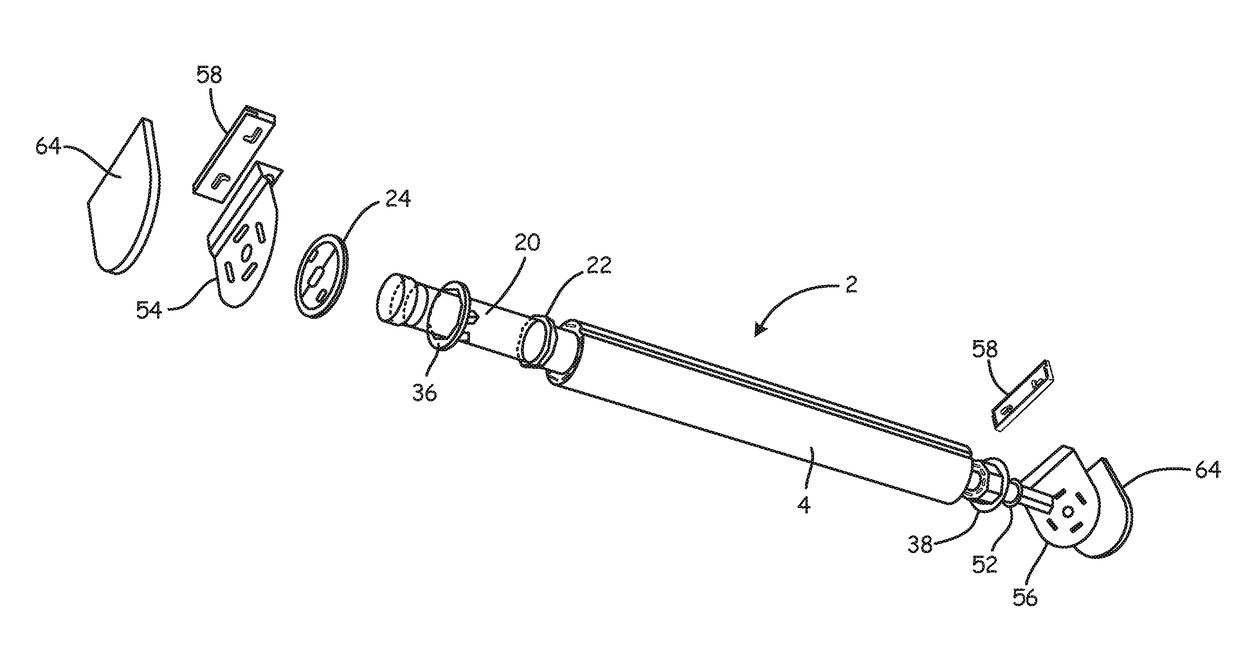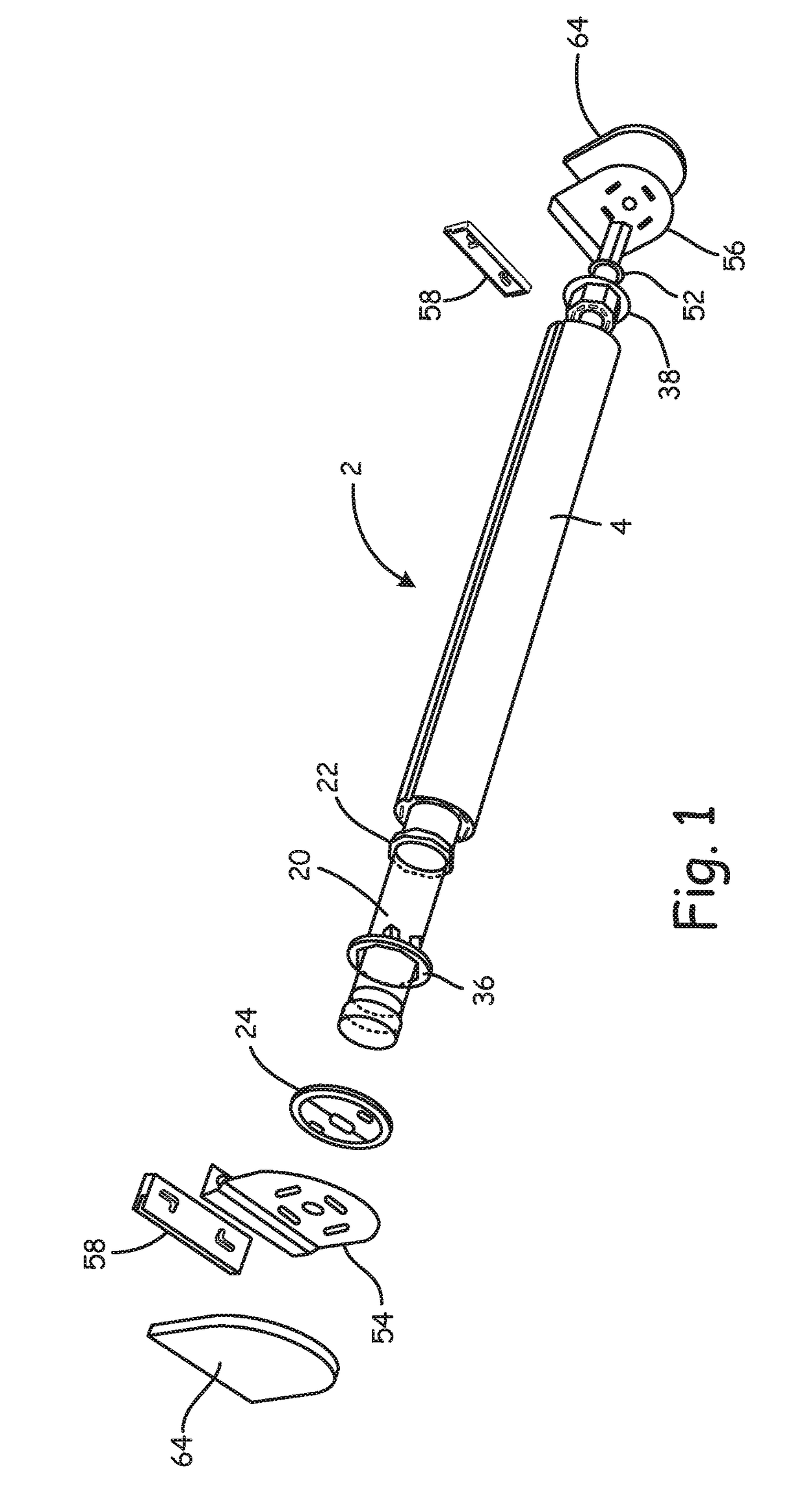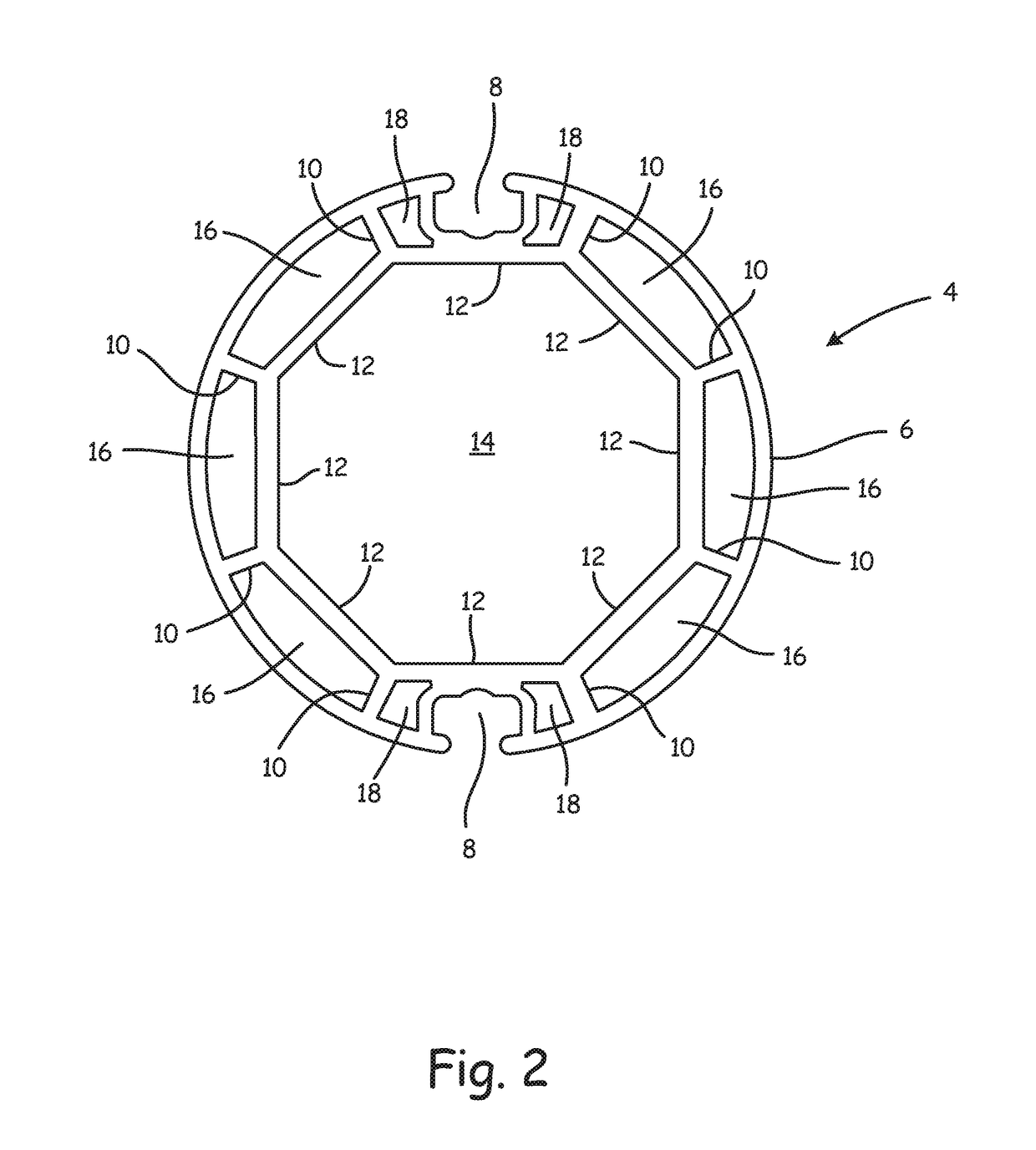Roller tube
a technology of roller tubes and rollers, applied in the field of roller tubes, can solve problems such as clear undesirable nois
- Summary
- Abstract
- Description
- Claims
- Application Information
AI Technical Summary
Benefits of technology
Problems solved by technology
Method used
Image
Examples
Embodiment Construction
[0047]For the avoidance of doubt, the skilled person will appreciate that in this specification, the terms “up”, “down”, “front”, “rear”, “upper”, “lower”, “width”, etc. refer to the orientation of the components as found in the example when installed for normal use as shown in the Figures.
[0048]A roller blind assembly 2 is shown in FIG. 1. The assembly 2 comprises a roller tube 4 which is shown in more detail in FIG. 2. The roller tube 4 includes an outer tube wall 6 within which is defined a pair of opposed fabric receiving slots 8. In this embodiment, the two slots 8 are substantially identical. However, it will be appreciated that slots 8 having different dimensions may be incorporated.
[0049]Projecting radially inwards from the outer tube wall 6 are eight side wall elements 10 which are equally circumferentially spaced from each other. Each pair of adjacent side wall elements 10 are joined at their inwardly facing end by an end wall 12. The arrangement of end walls 12 provides t...
PUM
 Login to View More
Login to View More Abstract
Description
Claims
Application Information
 Login to View More
Login to View More - R&D
- Intellectual Property
- Life Sciences
- Materials
- Tech Scout
- Unparalleled Data Quality
- Higher Quality Content
- 60% Fewer Hallucinations
Browse by: Latest US Patents, China's latest patents, Technical Efficacy Thesaurus, Application Domain, Technology Topic, Popular Technical Reports.
© 2025 PatSnap. All rights reserved.Legal|Privacy policy|Modern Slavery Act Transparency Statement|Sitemap|About US| Contact US: help@patsnap.com



